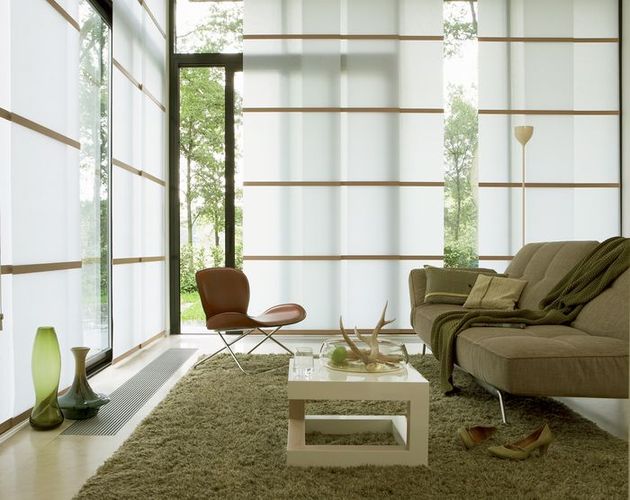5 Basic Tips For Choosing Upholstery Fabric
The
upholstery on your sofa, chair or ottoman is what will define the character of
the room. Robust leather, elegant silks, plush velvets each have their own pros
and cons. Apart from aesthetic considerations, there are other factors to
consider while choosing between different materials. Our tip list here covers
the essential points to keep in mind before you pick the upholstery
Dubai al quoz, chair or ottoman.
1. Durability
Before you settle down with any cheapest upholstery in al quoz, ask the salesperson whether it’s for light, medium or heavy use. This way, you can eliminate options which might look aesthetically pleasing but can wear out easily.
Engineered
fabrics are stronger than natural ones. So while cotton seems like the obvious
option for our tropical climate, it should only be restricted to pillows and
cushions. On the other hand, a combination of cotton, rayon and polyester is a
great, durable option for a family room couch. If kids and pets are a part of
your household, microfiber fabric, viscose or leather is the way to go.
Chenille provides as much durability while lending a luxurious look. If your
living room sees a lot of traffic, you might want to steer clear of printed and
heavily textured fabrics as they wear out in patches where you sit regularly.
Instead, opt for fabrics with woven patterns as those designs are meant to last
long.
2. Colour
Upholstery fabric colour can make a strong impact in many ways. For
example, new age colours used on vintage furniture gives the room an urban,
edgy vibe. Light hues used on large furniture in a small room can make the
space look larger than what it is.
Ask yourself the simple question of what kind of mood you want to create
– whether you are attracted to dramatic colours or if you would rather stick to
subtle hues. Accordingly, pair up the furniture with pillows, throw rugs, mats
and more with contrasting or complementing colours and patterns. Solid hues are
great for this as they can be spruced up with different coloured accents
according to mood.
Going for in-season colours might be a tricky as trends change often and
keeping up with the times is not a pocket-friendly decision. So pick a colour
that you think you can live with for years on end. Also, avoid delicately
coloured fabrics around children and pets and choose dark colours for
camouflage.
3. Pattern
As a thumb rule, avoid large patterns on a small piece and vice versa, as this does not do justice to the pattern.
Choose
patterns that will accentuate the geometry of your furniture. For example,
stripes or geometric lines would look great on sleek, straight lined chairs,
making them look taller or broader. However, round edged sofas and ottomans can
pull off florals and tribal prints with ease, exuding comfort and cheer in the
living room.
Also, consider
the size of the room when choosing a pattern. Bold patterns fit well in large
rooms while miniature patterns thrive in small spaces. If you want to mix
patterns, start with using the most complex pattern as accents and slowly work
the others in a balanced manner.
Lastly, keep
an eye out so that patterns are not cut off at odd angles. This can destroy a
beautiful pattern’s symmetry.
4. Style
Like colour
and patterns, upholstery fabrics are vital in creating different themes in a
space. For example, silk appears formal and can be used on furniture in a
traditional, elegant set up. An English sofa or camelback can pull off a
traditional fabric like damask. Linen, on the other hand, is casual and works
best on modern furniture.
The simple,
safe formula here would be to match traditional fabric with classic furniture
pieces, modern fabrics with contemporary furniture and so on. However, a room
can be made to look adventurous by mixing polar elements. If this helps echo
your style and personality, then go for it.
5. Maintenance
Even if you
find your dream fabric that fits all the criteria mentioned above, it is vital
to know how much wear and tear your sofa can take and whether you are willing
to give it the care required. If possible, try to get a sample of the fabric
and stretch, compress it to see if it changes its structure drastically.
If your
furniture is going to be placed somewhere in direct sunlight, then avoid
natural fabrics like cotton, linen as they fade over time. For those suffering
from allergies, microfiber fabric and hypo allergenic cushion fill are the
remedy as they do not attract dust. Stain resistant outdoor fabrics, distressed
leather and vinyl are great for homes with kids and pets. In humid conditions,
look for fabrics that are resistant to mildew.
To prolong the
life of the upholstery, vacuuming once a month is a must as dust and dirt
combined with friction from using the furniture breaks down the fabric.
Washable fabrics are also a much sought after option as they come with cleaning
codes on their labels when purchasing.




Comments
Post a Comment